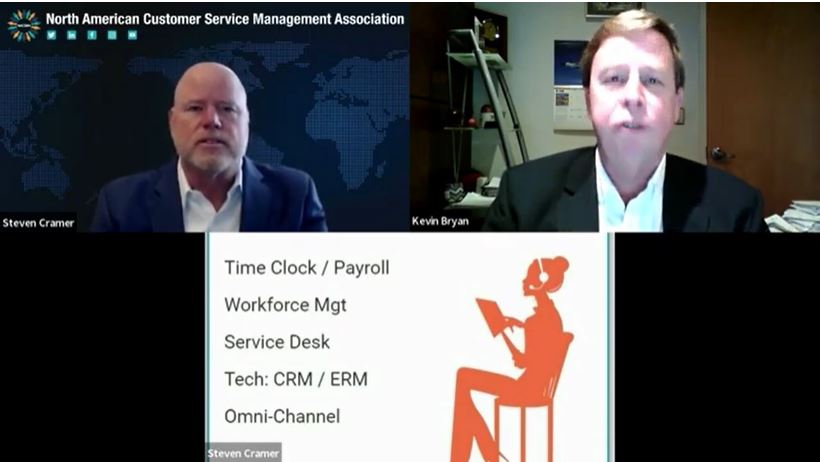TELECOM AND OMNI-CHANNEL
Industry Trends
More customers are using e-commerce due to new technology, Internet 2.0, and the economy improving. We’re seeing more millennials and less baby boomers fueling contact center growth.
Call centers have evolved into “contact” centers since agents now use email, text, and chat along with voice to communicate with their customers. The term “call” center is no longer used, as customers today take an “omni-channel” approach, which is utilizing more than one channel to communicate with a company to express needs, compliments or complaints. Contact centers must adapt to this holistic experience by deploying software that can easily escalate conversations from chat to voice, or from web to voice. Customers want to transition from a mobile app, text and/or email to voice assistance, quickly and easily.
Customers prefer to help themselves first by visiting a company website to resolve an issue. Many times, websites are old, outdated, not working or just not set up for self-service and customers are forced to make a call. Gartner predicts by 2020 customers will manage 85% of their relationship with a company without any human interaction.
The more communication channels you have, the greater the customer satisfaction because not all generations prefer the same communication type. It also depends on the level and depth of the conversation.

What Do Agents Need?
First, to login to the contact center platform and always know what status they are in. Old systems have agents’ login to a 3rd party application that connects them to a desk phone, which can leave them guessing “Am I logged in?” Look for SaaS based contact center platforms that do not utilize softphones, but WebRTC. Headsets plug into the PC and the agent logs into the contact center platform through the web browser and can see very easily what the status is: Logged in, logged out, lunch, training – no more AUX codes. Make it easy for agents to use. Supervisors also can clearly see the status of agents – no matter where in the world they may reside.
Second, agents want to see their own personal metrics – live in a dashboard. How many calls did they take today? What are their talk times? Agents want to see all the metrics they are being evaluated on right at their desk, in real time. Tomorrow’s whiteboard report is too late. If you want agents to improve, give them immediate feedback. Giving them an effective tool lets them see in real time how they are doing. Reporting today’s results tomorrow is just so last year!
What Do Customers Want?
First, consumers want a simple IVR. Customers who have already tried to use self-service but still need assistance know that the next step is the dreaded phone call. When the customer makes the call, they want to talk with someone immediately. Consumers do not want to spend the next 15 minutes tangled up in an interactive voice response system (IVR). Many companies misapply the use of an IVR. If it is intended for self-service, make that clear. It if is intended to direct calls to agents, make the IVR simple with a short menu. This will eliminate the frustration consumers have with poorly designed IVR’s and will drive up customer satisfaction immensely when done right. Leave self-service for websites or specific 800 numbers intended for self-service.
Second, consumers want is to complete account authentication once. If you ask for the account number via the IVR, don’t ask again when the agent connects. If the agent needs to transfer the call, don’t make the customer start all over. Some of this duplication is due to processes, some due to technology, some because of policy but this small thing makes callers crazy. Companies look stupid to customers because agents keep asking the same questions and the caller’s request is still unresolved. Ask once and address requests quickly.
INDUSTRY SERVICE TIPS
1. Make it easy for agents and managers to manage with an Automatic Call Delivery (ACD) that integrates CHAT and calls into the same queue. It is easier to wait on customers in the order they were received and all CHATS are trackable and reported just like calls.
2. Sit social media, email and webchat agents together to catch repeat inquiries from the same customer. Customers will ask the same question using different channels hoping to get a different answer. Putting these agents together helps catch multiple contacts before agents reply individually.
NEXT STEPS
Omni-channel strategies are now essential for continued success and brand differentiation. Determine what customers need and/or want and match the best omni-channel strategy to provide the most relevant communication. Develop an Omni-channel strategy that syncs up to your customer service strategy.
IVR/AI - Natural Voice
Industry Content Supporter:
Kevin Bryan
VP Sales and Marketing
Digital Base Productions
https://www.linkedin.com/in/bryankevin
https://digitalbase.com
IVR and or AI voices are some of the most important aspects of the telephony industry.
The first thing a caller hears is THAT voice, and no one wants to start off the experience with a bad voice. Clients sometimes ask about a professional voice over for a project. At times the TTS solution is okay, but client wants another option that is more personable, or maybe they are thinking about using an internal voice which is never a great option either.
So what is the difference between an AI voice or the human voice? In the last three years AI voice overs have taken great strides in being able to allow customers the flexibility to quickly update important information and go live in a short time.
The Ai initial set up is expansive and is cost prohibitive to some. With the human voice at times it costs about the same as Ai and is not as fast as typing it out and using the AI voice sooner it seems. However, if you can type it the human talent can voice it. As innovation keeps evolving and companies keep up with the cutting edge of technology lots will continue to change, but ultimately it will come down to have the proper voice give the customer experience people look for and technology strives for.

Chat
Simple, quick questions and issues can be resolved in a Chat box.
Online Chat is a powerful tool for customers who don’t want to talk or wait on the phone in a queue. Customers should be able to bring up a company’s website from any desktop or smart device such as a laptop, smartphone or tablet and see the chat box pop up, asking how they can be helped.
What customers don’t like about the chat feature is when the agent disappears from the chat for a long time. You and I know they are handling other chat conversations or even taking phone calls, but to the chat customer it can seem like they’ve been abandoned. If you have Chat integrated into the automatic call distributor(ACD), those online conversations are handled like calls; placed in a queue and routed to an agent. Chats can be routed to an all chat team or a blended team. When your call reports are run, you can see how many chats each agent has handled and the chat talk times. No different than voice. Customers then are being taking care of in the order received, one at a time getting their request resolved super fast.
Short Message Service (SMS)
Text messages work well for appointment and delivery confirmations. Amazon, FedEx, UPS, all use them for delivery status. You can track a package around the world using text messages. This is “one way” or “push” communication.
Today people are busy and don’t want to stop to make small talk. Texting is perfect for the doctor or salon appointment confirmation. Just press “C” or reply with “ok” to confirm and you will be there. SMS from the contact center is just as simple, mostly one-way from the company with limited capability for simple replies.

Most consumers today don’t have a fax machine anymore and rely on scanning documents and mailing them as PDF attachments.
There are many contact centers unable to handle email to or from customers. When the document is faxed it goes to a company server and from there uploaded to the customer’s account. When it goes to an email address it is now the responsibility of the agent to upload the attachments. Now the attachment is at risk of never getting uploaded to the account. The agent quits and the email account is closed. The customer calls in, frustrated that their documents weren’t received.
The next issue with email is that it never goes away. There is a traceable email string. The agent attaches the string to the account and the customer saves it for the next time they have an issue. It never terminates like a phone call, an SMS or a chat box. The risk is greater for that email to rise again especially if you have a disgruntled customer. It can be emailed to others within and outside of the company – losing control of it. You can’t control what agents write, how they write it, when, and to whom. Yes, there is a corporate email policy but there are always agents who go rogue and do their own thing. How do you manage this? Email is tricky. Think through the uses for email before opening all your agents to this method of communication with your customers.
VIDEO FROM OUR EXPERTS
INDUSTRY EXPERTS
NETWORKING FOR CONTACT CENTER PROFESSIONALS
ABOUT NACSMA
NACSMA brings together like-minded professionals focused on advancing the customer contact industry and creating career growth.
BEST-IN-CLASS
Management of a best-in-class contact center sites require the continuous review of Agent Sourcing Models, Organizational Training and Management Development Programs.
NACSMA MEMBERSHIP
NACSMA is a professional, non-profit association whose members represent customer contact organizations and the vendors who support them.
IMPLEMENTATION
When a contact center organization expands to an additional site or requires new space, the steps to properly implement are unique to each organization but do have standard phases.



